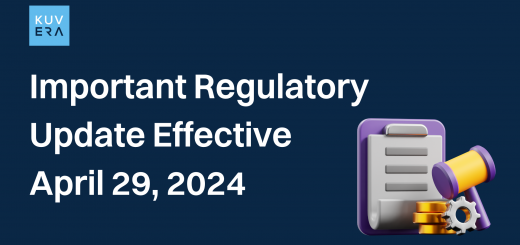The government and various public sector financial institutions have introduced savings schemes as investment choices for Indian residents. These savings plans were implemented in India as a means of encouraging good saving and investing habits. This is another method to increase the amount of money entering the Indian economy. In the past, Indians kept their money to themselves, which led to low circulation and stagnation of wealth.
Indian people can take advantage of the tax exemptions that certain savings schemes offer by using government-backed saving plans to allow their wealth to grow at better interest rates. Savings programs serve a wide range of people and encourage saving for multiple important life events, including retirement, children’s further education, marriage, etc. They are excellent for long-term wealth growth because they come with a specific lock-in time and provide good returns.
They are safe investment options for conservative investors because they are unaffected by market volatility. In addition, to keep up with inflation and rising living expenses, interest rates on a variety of savings plans are adjusted on a quarterly or semi-annual basis. Some of the numerous savings plans offered are listed below.
-
ELSS (Equity-Linked Savings Schemes)
Equity-Linked Savings Schemes are mutual fund investment plans that place a significant portion of their portfolio in equity. Additionally, the fund has the shortest required lock-in time of all the investment products, at just three years.
Under Section 80C of the Income Tax Act, investments in ELSS funds are eligible for a deduction of up to Rs. 1.5 lakh. The amount deposited via a Systematic Investment Plan (SIP), as well as a lump sum investment, are both eligible for the deduction. There is always some risk associated with ELSS funds because they invest a substantial amount in equities.
ELSS funds offer tax savings in addition to financial appreciation. As a result, investors find it to be one of the most effective tax-saving strategies. In general, taxpayers who want to take advantage of the Section 80C rules and are ready to take some risks should think about investing in ELSS.
-
Public Provident Fund (PPF)
The Public Provident Fund (PPF) has traditionally been a well-liked tax-saving scheme among taxpayers. The fact that the Public Provident Fund has EEE (Exempt-Exempt-Exempt) tax status is one of the main factors contributing to its popularity. The Public Provident Fund accounts can be opened at a bank or post office.
Section 80C of the Income Tax Act allows taxpayers to deduct the amount they made during the financial year. The maximum amount that may be deducted is Rs. 1.5 lakh. The interest and maturity amount of a PPF is tax-free because it falls within the exempt category.
The option to withdraw the corpus is available after the lock-in term of 15 years. If necessary, investors can continue the scheme by extending it in blocks of 5 years. The lowest deposit requirement is Rs. 500, and the annual maximum deposit limit is Rs. 1.5 lakh. Investors have the option of depositing the amounts all at once or in 12 installments.
The amount beyond Rs 1.5 lakh is not eligible for tax exemption. Any Indian citizen may profit from this scheme, although NRIs cannot open a PPF account. Joint accounts are not permitted, and each person is limited to holding a single PPF account. However, investors can assign a nominee at the time of account opening.
-
Sukanya Samriddhi Yojana (SSY)
The Sukanya Samriddhi Yojana has become one of the most prominent tax-saving programs. The Indian government launched it in 2015 as part of the Beti Bachao, Beti Padhao campaign. The scheme enables the taxpayer to invest in a fixed income investment in which they can make recurring deposits and earn interest. Investors can also claim tax deductions up to Rs. 1.5 lakh in a financial year under Section 80C of the Income Tax Act for their contributions toward the Sukanya Samriddhi scheme.
The interest rate on the plan is set by the Indian government on a quarterly basis and is due at maturity. The plan has a 21-year lock-in period and will mature after that time. For 15 years, a minimum deposit of Rs. 250 must be made each year. The account will be discontinued if the required minimum payment is not made within a year. Investors must pay a minimum deposit amount plus a penalty of Rs. 50 to get their account reactivated again.
The following eligibility requirements must be met in order to open a Sukanya Samriddhi account:
- The benefits of this program are only available to girl children.
- The girl child must not be older than ten years old.
- Age proof of the girl child.
- Only one account can be held for one girl child.
-
National Savings Certificate
A national savings certificate is a government-sponsored fixed-income investment program aimed at investors with low and moderate incomes who want to make investments and earn good returns. It is thought to be a low-risk investment that is equally safe as the Provident Fund. Investing options are available based on an investor’s investing preferences and income profile.
Under section 80C of the income tax act, investments made in the National Savings Certificate are eligible for a deduction of up to Rs. 1.50 lakhs. Along with the benefit of tax exemption, it offers the investor total capital protection and interest that is guaranteed. The following are some of the NSC’s tax-saving features:
- The guaranteed interest is 6.8% each year.
- NSC comes with a lock-in period of 5 years
- Section 80C allows investors to claim a tax benefit up to Rs. 1.5L.
- The interest can be re-invested only for four years since NSC has a maturity period of 5 years. The interest earned in the fifth year comes into the hand of the investor with the maturity amount.
-
Tax-Savings Fixed Deposit
One of the most secure methods of tax savings is fixed deposits. In terms of risk and returns, it is generally less risky than other investments. A few features are listed below:
- Investments in tax-saving fixed deposits are deductible from taxable income under section 80C.
- A minimum 5-year lock-in term
- Senior citizens are eligible for higher interest rates on their investments.
- Tax-Savings Fixed Deposit does not permit early withdrawal.
-
Employees Provident Fund (EPF)
The Employee Provident Fund (EPF) is a savings scheme operated under the EPF guidelines. Employers and employees covered by EPF are required to make contributions to a Provident Fund (PF) account in the employee’s name. The Employee Provident Fund (EPF) provides retirement planning for the working class over the long term. The employer and employee each put 12% of the employee’s monthly income into this provident fund account as part of this savings scheme. In case of emergencies, the account also provides financial security for the account holders.
-
Senior Citizen Savings Scheme
A Senior Citizen Savings Scheme is a tax-saving program available to senior citizens who are residents of India and who are age 60 or over. Among the different savings plans, the scheme offers one of the highest rates and is accessible for investment through banks and post offices.
Depositors can invest from as little as Rs. 1000 to multiples of that amount. Investments in the Senior Citizen Savings Scheme are eligible for a deduction from taxable income of up to Rs. 1.5 lakh under section 80C. The scheme also offers the option of investment through cash as long as the investment is less than Rs. 1 lakh. The contributions paid to the program mature after five years. Additionally, the depositors have the choice to add another three years to the maturity time.
-
National Pension Scheme ( NPS )
The National Pension Scheme(NPS) has become a well-liked investment vehicle for reducing income tax liability. Both government and private sector employees can use this tax-saving scheme. It enables the depositor to build a corpus for their retirement along with a regular monthly income. NPS accounts are divided into Tier-1 and Tier-2 categories. It enables the depositor to build a corpus for their retirement along with a regular monthly income. The depositor’s money is invested in a variety of plans, including equity markets.
Any individual can claim tax benefits under Sec 80 CCD (1) with an overall ceiling of Rs. 1.5 lac under Sec 80 CCE. An additional deduction for an investment up to Rs. 50,000 in NPS (Tier I account) is available to NPS subscribers under subsection 80CCD (1B).
-
Unit Linked Insurance Plan (ULIP)
The Unit Linked Insurance Plan is one of India’s most significant investment plans. It safeguards the financial stability of one’s family in the event of death. The taxpayer can also take advantage of tax savings by buying a life insurance policy. The premium for a life insurance policy can be written off up to Rs. 1.5 lakh under Section 80C of the Income Tax Act of 1961.
-
Atal Pension Yojana (APY)
As a government-sponsored savings scheme, this initiative is aimed at the welfare of the weaker section of society. The Atal Pension Yojana provides individuals with a valuable pension scheme for their post-retirement years. People can benefit from this scheme by paying a very small premium. This is a sustainable retirement scheme that benefits those in the weaker section of society and those who work in the unorganized sector by providing them with a regular pension. Individuals between the ages of 18 and 40 may apply for the scheme.
Benefits From Savings Schemes
Below are a few of the key benefits of investing in savings plans:
- By investing in savings schemes, individuals can attain their long-term objectives, such as retirement plans, children’s education, and marriage.
- Currently, there are a multitude of savings plans. The advantages differ depending on the scheme and the industry. For instance, the Sukanya Samriddhi Yojana aids a girl child financially, and the Pradhan Mantri Jan Dhan Yojana is intended to assist those who are living in poverty.
- The maintenance and investment in the plans are quite simple, and the majority of contributions can be made online.
- Due to the fact that the schemes are initiated by the Indian government, the contributions made to the schemes pose minimal risk and are safe and secure.
In conclusion, a number of saving plans with different risk profiles are available to meet the needs of a wide range of investors. Since they are all supported by the government, they all guarantee both capital protection and growth at attractive rates. To choose the best option, assess the interest rates, tax advantages, and lock-in periods of different schemes. For optimal growth of wealth, investors can invest across a combination of savings schemes as well.
Frequently Asked Questions (FAQs)
-
What is the difference between the Employee Provident Fund (EPF) and the Public Provident Fund (PPF)?
The Employee Provident Fund (EPF):
The Employee Provident Fund is a well-known retirement savings plan that was established under the direction of the Government of India and is supervised by the Ministry of Labor. The EPFO (Employee Provident Fund Organization) manages the EPF.
Both the employee and the employer make financial contributions to the EPF fund. The scheme intends to accumulate a suitable retirement corpus during an individual’s employment years. Additionally, it instills in the working class the discipline and habit of saving money. Each month, 12% of the salary (basic and dearness allowance) is contributed by both the employee and the employer to the EPF. The EPF money and interest are given to the employee as a lump sum after retirement. The EPFO fixes the interest rate, and the interest is completely tax-free in the hands of the employees.
This scheme is considered a risk-free investment because it is backed by the government. Additionally, both the employer and the employee are required to make contributions to the plan. Furthermore, even if a person changes jobs, the scheme will continue throughout their employment years. If an employee changes jobs, they must update their EPF account with their new employment information.
The Public Provident Fund (PPF):
The Public Provident Fund (PPF) was established by the National Savings Institute in 1968. Since it is one of the government-backed plans, the returns are guaranteed. PPF is one of the post office savings schemes. It is therefore accessible at select public banks and post offices.
PPF investments are open to all Indians. NRIs and Hindu Undivided Families (HUFs) cannot open a PPF account, though. There can only be one PPF account opened in the name of each person. On the other hand, an extra account can be opened for a minor.
The lock-in period for PPF accounts is 15 years. Additionally, investors have the choice to continue investing for a further five years. Each extension is possible for a block of five years. The minimum investment is Rs. 500, while the maximum amount is Rs. 1,50,000. Investments above Rs. 1,50,000 do not earn any interest. Additionally, to maintain the PPF account’s status, at least one deposit must be made annually. According to Section 80C of the Income Tax Act of 1961, investments in PPF are tax-exempt for investors. Additionally, investors are not required to pay any taxes on the return or maturity amount.
Interested in how we think about the markets?
Read more: Zen And The Art Of Investing
Watch/hear on YouTube:
Start investing through a platform that brings goal planning and investing to your fingertips. Visit Kuvera.in to discover Direct Plans and Fixed Deposits and start investing today.
#MutualFundSahiHai #KuveraSabseSahiHai!











